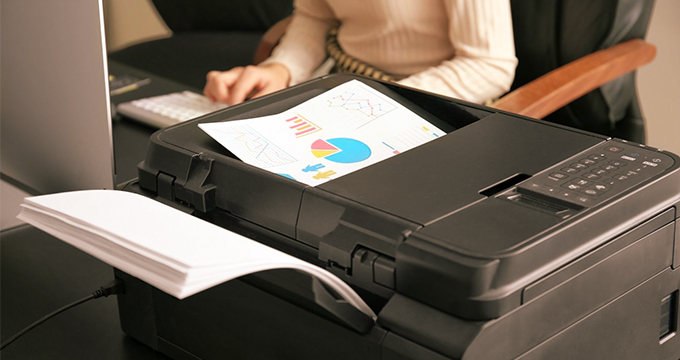Choosing the Right Scanning Protocol: A Comparative Guide
In the dynamic realm of scanning technologies, protocols and interfaces form the foundational framework for seamlessly integrating scanners with computer systems. Popular frameworks such as TWAIN, SANE, ICA, WIA, and eSCL have distinctive features and functionalities. So, how do you decide which one to choose? This blog compares the scanning protocols to help you decide.
1. Document Scanning from TWAIN Scanners
TWAIN is a widely used software protocol and applications programming interface (API) that regulates communication between software applications and imaging devices like scanners and digital cameras.
Originating in the early 1990s, TWAIN stands for “Technology Without An Important Name,” reflecting its developers’ sense of humor. It is designed to simplify acquiring images from scanners and cameras directly into software applications, primarily for document and image management.
Important Features of TWAIN Scanners
-
Platform Independence: TWAIN is platform-independent, making it compatible with various operating systems, including Windows, macOS, and Linux.
-
Standardized Interface: TWAIN scanners provide a standardized interface, ensuring compatibility with various applications and imaging software.
-
Advanced Image Processing: TWAIN scanners offer advanced image processing options, such as resolution settings, color correction, and image enhancement, allowing users to customize the output to meet specific requirements.
Which Scanners Support the TWAIN Protocol?
TWAIN-compatible scanners are prevalent in the market, with most leading manufacturers offering TWAIN support in their models. Examples include Epson, Fujitsu, HP (Hewlett-Packard), Kodak Alaris, and many more.
Go through the list of TWAIN-certified drivers.
The TWAIN Working Group, a not-for-profit organization, is dedicated to maintaining and enhancing the TWAIN standard. This group comprises various scanner vendors. These manufacturers and software company members, like Dynamsoft, collectively contribute to the ongoing development and refinement of the TWAIN protocol.
2. Document Scanning from SANE Scanners

SANE stands for “Scanner Access Now Easy” and is an application programming interface (API) that provides standardized access to any raster image scanner hardware. SANE is primarily targeted at a UNIX environment.
Compared to TWAIN, two notable features of SANE are its network-transparent access to image acquisition devices and the clear separation of device controls from their user-interface representation.
Key Features of SANE Scanners
-
Driver Compatibility: With diverse drivers, SANE scanners ensure adaptability to various models, providing a cohesive interface for applications and a unified experience across different scanners.
-
Cross-Platform Compatibility: SANE is designed to be platform-independent. It is most compatible with operating systems such as Linux and UNIX.
-
Open-Source Project: SANE is open-source, enabling free modification and distribution of its source code for community collaboration and driving ongoing improvements and updates.
Which Scanners Support the SANE Protocol?
The SANE project maintains a list of SANE-compliant scanners and other devices. Check the list here: SANE - Supported Devices.
3. Document Scanning from ICA Scanners
ICA stands for Image Capture Architecture, an Apple framework designed to “Browse for media devices and control them programmatically from your app.” ICA, a part of macOS, streamlines importing images from cameras and scanners into Apple’s operating system.
Which Scanners Support the ICA Protocol?
Similar to Windows, which does not maintain a list of WIA (Windows Image Acquisition) supported scanners, Apple also does not keep a public, comprehensive list of scanners supported by ICA (Image Capture Architecture).
Key Features of ICA Scanners
-
Simplified User Interface: ICA scanners offer a user-friendly interface within the Image Capture app, which allows users to initiate and manage scan tasks without third-party software.
-
Seamless Integration with macOS: macOS users can seamlessly scan using ICA scanners with the native Image Capture app, providing a consistent experience.
-
Automatic Driver Installation: ICA scanners on macOS streamline setup with automatic driver installation, making setup hassle-free.
4. Document Scanning from WIA Scanners
WIA is a short form for Windows Image Acquisition. It is a proprietary driver model developed by Microsoft. It facilitates the capture of digital images from various devices, including scanners and other imaging devices.

Key Features of WIA Scanners
-
Driverless Compatibility: One of WIA’s critical features is its Integration with the Windows operating system, eliminating the need for additional driver installations. WIA-based scanners work right out of the box on Windows.
-
Simplified User Interface: Compared to TWAIN, another imaging software interface, WIA offers a more streamlined and standardized user interface.
-
Basic Scanning Functions: WIA is best suited for essential scanning functions. Its streamlined approach is tailored for users who require straightforward image acquisition without the need for advanced scanning features.
Which Scanners Support the WIA Protocol?
TWAIN is generally more popular and widely adopted than WIA (Windows Image Acquisition). However, given that many leading scanner manufacturers design products to ensure compatibility with Windows, it’s reasonable to assume a significant portion of modern scanners support WIA. Microsoft does not appear to provide a specific list of certified WIA scanners.
5. Document Scanning from eSCL Scanners
eSCL is designed for networked scanners. It enables driverless scanning over a network (Ethernet, Wi-Fi) and USB connections. It is supported on macOS, Windows, and Linux with the sane-airscan backend. eSCL is ideal for modern office environments where scanners are networked and need to be easily accessible to multiple users across different platforms. It utilizes Bonjour for device auto-discovery and is based on XML and HTTP. Due to CORS policy restrictions, its direct use in JavaScript is limited.
Key Features of eSCL Scanners
-
Web-Based User Interface: eSCL scanners often incorporate a browser-accessible web interface, which allows users to customize scan parameters and manage tasks conveniently.
-
Wireless Scanning: eSCL scanners enable wireless Scanning, offering flexible and convenient workflows without physical connections.
-
Multifunction Support: eSCL scanners integrated into multifunction devices are suitable for office and home environments and offer diverse document processing capabilities.
Which Scanners Support the eSCL Protocol?
Go through the list of eSCL-certified multifunction printers and scanners.
A Comparative Analysis of Various Protocols and their Distinctive Features
This table compares the various features of different protocols, from compatibility to hardware support.
| Feature/Protocol | TWAIN | SANE | ICA | WIA | eSCL |
|---|---|---|---|---|---|
| Compatibility | Widely supported on Windows and partially on Mac | Primarily Linux and UNIX systems | Mainly for macOS | Windows-focused | Common in modern network scanners |
| Target User | Professional and business use | Open-source community, Linux users | Apple users | Windows users, consumer level | Network and cloud-based scanning environments |
| Functionality | Advanced features, customizable | Flexible, open-source development | Integration with Apple’s ecosystem | Simple, user-friendly | Focus on networked and cloud scanning |
| Hardware Support | Broad range of scanners | Selective, depends on community support | Apple-compatible scanners | Primarily Consumer-grade scanners | Modern, network-capable scanners |
Which Option to Choose?
TWAIN is a highly versatile option compared to other scanning protocols like SANE, ICA, WIA, and eSCL. It provides a standardized interface that ensures seamless compatibility across diverse applications and operating systems. Its widespread industry adoption, bidirectional communication, extensive features, and broad support for imaging software make TWAIN an ideal choice for users seeking a comprehensive and widely compatible scanning solution.
Download 30-days trial of Dynamic Web TWAIN.
Explore Our Developer Hub for Guides, API References, and More.



 Blog
Blog
